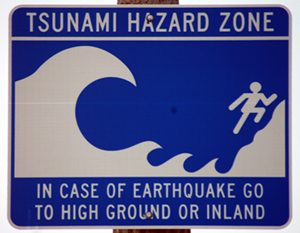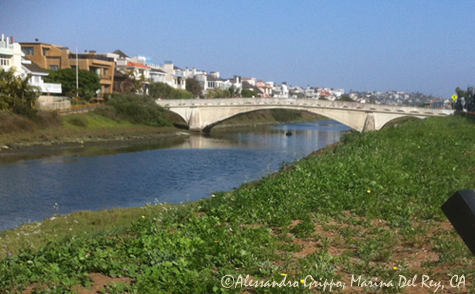 |
GEOL 31 - Physical Oceanography
Exam # 4 Study Guide - Fall 2017
exam date and time: Monday, December 11, 2017 at 5:15 PM
Professor: Dr. Alessandro Grippo, Ph.D.
|
|
| |
| General Information | Last Updated • December 5, 2017 | |
PLEASE NOTE:
Cellular phones, iPads, Androids, iPods, Blackberries, Bluetooth devices, headphones, computers or, in general, ANY KIND of electronic device CAN NOT be used during the test. All electronic devices MUST BE TURNED OFF: if a cell phone rings or a device is turned on in the classroom during test time, you will not be allowed to finish your test and your result will be invalidated.
You can not use any dictionary, translator, pocket calculator, flash card, or any external source of information. There will be no need for a ruler during this test. No hoods, hats, or anything that hides your ears will be allowed.
You will ONLY need to bring:
- one Scantron, Form 882-E
- a number 2 pencil
- an eraser
This study guide must be interpreted (literally) as a guide to the study of the subject and not as a listing of possible questions.
It is YOUR personal responsibility to cover the materials listed in this online study guide
- in the lecture textbook
- on the web pages
- in your notes.
I would strongly recommend that you peruse your notes for completeness of information: some information that has been detailed in class is only mentioned briefly on the textbooks, and you are responsible for covering that; know what the key terms and concepts are (see the list at the end of each chapter on both your textbook and your lab manual); exercise with the questions for review also found at the end of each chapter. Review the materials from your quizzes.
Read the summary at the end of each chapter, try to answer review questions, try to work with others if you find it useful.
Never hesitate to ask me questions in class or during a lab.
 A tsunami warning sign
in Santa Monica, California.
© Alessandro Grippo, All Rights Reserved.
| |
| Study Guide | Last Updated • December 5, 2017 | |
For every chapter:
- Review the list of "Essential Learning Concepts"
- Read the paragraph titles, to get an idea of the flow of the chapter
- Study the chapters
- Focus on the important figures
- Always work with the final paragraph section called "concept check"
- when present, read the "recap" section
- Work on "Essential Concepts review" at the end of each chapter
Chapter 8 - Waves and Water Dynamics
Study the whole chapter
- Know the Introduction
- Know How Are Waves Generated, and How Do They Move?
Pay attention to figure 8.2, page 247
- Know What Characteristics Do Waves Possess?
- Know How Do Wind-Generated Waves Develop?
Pay attention to figure 8.10, page 253; 8.14, page 256; 8.15 and 8.16, page 257
- Know How Do Waves Change in the Surf Zone?
Pay attention to figure 8.19, page 259; 8.21, page 261
- Know How Are Tsunami Created?
- Know Can Power from Waves Be Harnessed as a Source of Energy?
Chapter 9 - Tides
This chapter was on test #3, and it will not be on this test
Chapter 10 - Beaches, Shoreline Processes, and the Coastal Ocean
Study the whole chapter
- Know the Introduction
- Know How Are Coastal Regions Defined?
Be sure to understand the terminology in Figure 10.1, page 306.
- Know How Does Sand Move on the Beach?
Be sure to review Figure 10.3, page 307, and Figure 10.4, page 308.
- Know What Features Exist Along Erosional and Depositional Shores?
Be sure to study all the subparagraphs.
Review Figure 10.6, page 310, Figure 10.10 and 10.11, page 313, Figure 10.12, page 314, Figure 10.14, page 316, and Figure 10.15, page 317.
- Know How Do Changes in Sea Level Produce Emerging and Submerging Shorelines?
Be sure to know this section well.
Review Figure 10.18, page 321, and Figure 10.19, page 322
- Know How Does Hard Stabilization Affect Coastlines?
Be sure to know this section well.
Review Figure 10.20, page 323, Figure 10.22, page 324, Figure 10.25, page 325, Figure 10.26, page 326 and Figure 10.27, page 327
- Know What Are the Characteristics and Types of Coastal Waters?
Be sure to study all the subparagraphs.
Review in particular Figure 10.30, page 329, Figure 10.31, page 330, Figure 10.32, page 331, Figure 10.33, page 332, Figure 10.34, page 333, Figure 10.37, page 336, and Figure 10.39, page 337.
- Know What Issues Face Coastal Wetlands?
Be sure to study all the subparagraphs.
Review Figure 10.40, page 339.
Chapter 11 - Marine Pollution
We skipped this chapter. It will not be on the test
Chapter 12 - Marine Life and the Marine Environment
Study the whole chapter
- Know the Introduction
- Know What Are Living Things, and How Are They Classified?
Be sure to study all the subparagraphs.
Know Figure 12.1, page 376.
- Know How Are Marine Organisms Classified?
Know this section well.
Review Figure 12.4, page 380, Figures 12.5 and 12.6, page 381, and Figure 12.7, page 382.
- Know How Many Marine Species Exist?
Know this section well.
Know Figure 12.9, page 384.
- Know How Are Marine Organisms Adapted for the Physical Conditions of the Oceans?
Be sure to study all the subparagraphs.
Review Figures 12.11 and 12.12, page 384, Figure 12.15, page 387, Figure 12.15,page 388, Figure 12.16, page 389, Figure 12.17, page 390, and Figure 12.22, page 393.
- Know What Are the Main Divisions of the Marine Environment?
Be sure to know this section well.
Know Figure 12.25, page 396, and Figure 12.26, page 397.
Also, for completeness of information, make sure to review Figure 13.1, page 404, from Chapter 13.
Chapter 13 - Biological Productivity and Energy Transfer
You covered (or will cover) this chapter as a home assignment. It will not be on the test
 An example of a partially urbanized coastal wetland
in Marina del Rey, California.
© Alessandro Grippo, All Rights Reserved.
Go back to the home page  Go back to the Fall 2017 page
Go back to the Fall 2017 page
|
|
|
| |
Copyright © since 1994, Alessandro Grippo, All Rights Reserved.
|



 Go back to the Fall 2017 page
Go back to the Fall 2017 page